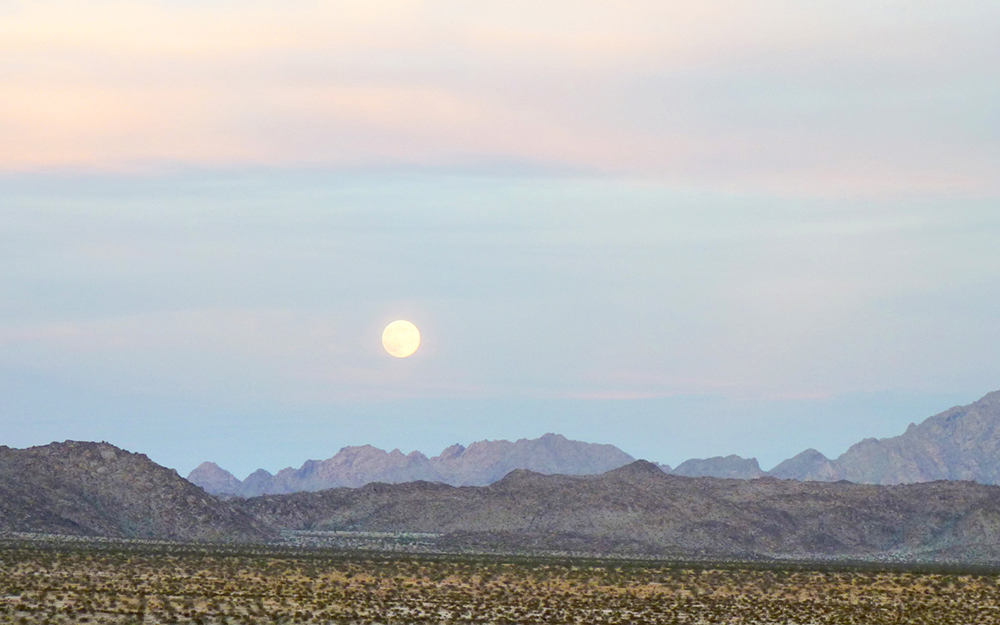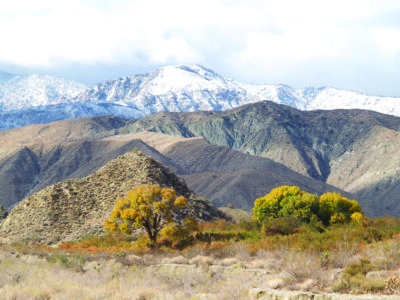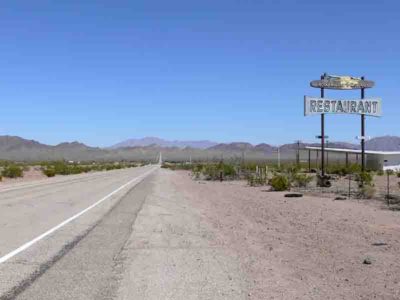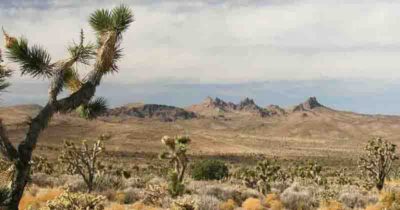
BY STEVE BROWN
In April, 2017, President Trump signed an executive order instructing Interior Secretary Ryan Zinke to review all national monuments created by previous presidents through use of the Antiquities Act since January 1, 1996, that are at least 100,000 acres in size.
The review was immediately met with opposition from the outdoor recreation industry, Native American tribes, and conservation organizations. The legality of the president’s ability to undermine designations made by previous presidents was questioned, and the future of the 27 national monuments under review became uncertain. The review allowed for reduction in size, or even the elimination, of previously designated national monuments.
Recently, the Department of the Interior’s review of monuments concluded and decisions began to emerge. Grand Staircase Escalante, designated by President Clinton, was ordered to be reduced by 46 percent, while Bears Ears was reduced by 85 percent. Other actions may follow.
But what about our new Sand to Snow, Mojave Trails, and Castle Mountains national monuments? To understand the factors that could play a role in the future of those monuments, we need to go back to the passage of Senator Dianne Feinstein’s 1994 California Desert Protection Act.
The original CDPA created the base for the California deserts as we know them today. They added land to Death Valley and Joshua Tree national monuments and redesignated them as national parks, and created the Mojave National Preserve. It’s worth noting both Death Valley and Joshua Tree were originally designated as national monuments by presidents using the Antiquities Act. Many of the national parks we cherish today were created by presidents through the use of the Antiquities Act, dating back to Teddy Roosevelt’s designation of Petrified Forest National Monument in 1906.
In 2015, Feinstein introduced new legislation, the California Desert Conservation and Recreation Act, which included provisions for Sand to Snow and Mojave Trails monuments. Castle Mountains wasn’t included as a monument. Instead, it was included as an addition to the Mojave National Preserve. The legislation included other protections, much of which was to balance the growth of massive solar and wind power projects, as well as designation of four existing off-highway vehicle areas as permanent OHV recreation areas, ensuring their designation would be protected.
Frazier Haney, conservation director for the Mojave Desert Land Trust, picked up the story from the introduction of Feinstein’s latest desert bill, as well as Rep. Paul Cook’s version of the legislation for the House of Representatives.
“I know for the desert bill, it was pretty well balanced,” Haney said. “There was a lot of give and take in it. We’d all have been a lot better off if the legislation passed.”
“The time line of all that is important to keep in mind,” Haney continued. “He [Cook] had been doing his diligence and homework and trying to understand what Feinstein had proposed in her bill to create his own companion bill in the House that would be acceptable to members of his own party.”
Haney noted Cook’s proposed legislation didn’t arrive early in 2015 as planned, and when it finally did arrive that June, it omitted the Mojave Trails National Monument. It also allowed for 10 percent of the monument to be open for mining claims, but didn’t specify where claims would be allowed. And, Haney noted, discussions about the use of the Antiquities Act to designate the new monuments had already begun.
“In August, Feinstein went to the president with a letter and said, ‘I’d like you to consider the monuments using the Antiquities Act and see if they fit the mold, and if you do that, please consider Black Lava Butte and Cadiz Valley and the Sacramento Mountains,’” Haney said.
Soon after the Obama administration agreed to consider designating the monuments, Cook introduced his legislation in committee, Haney said. Cook noted with his legislation under consideration, the Antiquities Act could not be used by the president. “That October the Feinstein bill and the Cook bill got their hearings in their respective committees, but no action was taken. Nothing happened after that.”
Haney noted stakeholders who had an interest in parts of the desert legislation other than establishment of national monuments, may have felt left out when the monuments were designated while their interests languished. But, he explained, there’s still hope.
“You take the monuments out of the desert legislation and you’re left with some wilderness additions, minor boundary changes to parks, and OHV areas being added, and a couple other relatively small things,” Haney noted. “It’s a lot less controversial. Feinstein, about a week after the monuments were designated, reintroduced her bill, sans monuments, and Cook reintroduced a bill after that, sans monuments, and those two bills line up almost exactly now.

for the Mojave Desert Land Trust
“The main sticking point that is still left is how to handle groundwater extraction in the east Mojave, Haney noted. “Cook was silent on the issue. Feinstein’s legislation said any groundwater pumping have been shown by the U.S. Geological Survey to be sustainable.
“We expect they’ll reintroduce both bills this year and finally get it done. We feel like we made a commitment to the legislation, to the whole thing, so we’re still committed to it.”
But California’s three new desert monuments still aren’t safe yet.
Sand to Snow National Monument

Sand to Snow was included on the DOI review list of monuments. After Interior’s review was concluded, Sand to Snow was declared safe. No boundary changes are expected. But, as Haney noted, it still faces challenges.
“Sand to Snow is out of any kind of jeopardy, like having its boundary redrawn, Haney said. “But there is no management plan for Sand to Snow. So we still need to be vigilant as to the way the management plan is enacted. If that happens in the next couple years under this administration, kind of under the shadow of the review of other monuments, we don’t know how that will impact things like vehicle routes versus cultural resources, or things like that.”
Haney noted most activities enjoyed on the public lands prior to designation as a monument often are allowed to continue under the new monument’s management plan, but sometimes potential changes might be beneficial.
“It [the management plan] would come into play at a place like Black Lava Butte [in Sand to Snow], he said. “There are a lot of vehicle trails that run through the butte, and there’s also a great deal of sensitive cultural resources. There could be a conflict between those two things. The management plan should work that out.”
Haney added with Interior’s review of national monuments, the most recently designated monuments have not gone forward with creation of their management plans.
“We expected the BLM would issue their notice of intent to prepare a management plan last year, but because of the review, they put all of the management planning on hold,” Haney said.
Mojave Trails National Monument

“That’s more in limbo,” Haney said of Mojave Trails. “While it was on the review list, it wasn’t taken off the review list, but it also just didn’t appear in the Secretary of Interior’s memo to the Trump administration. So, they haven’t come forward and said it’s safe, we’ve determined no changes are necessary, it was just kind of the silent treatment on Mojave Trails.”
Issues that could arise in Mojave Trails include minor adjustments for easement to a mine, and several thousand acres of unpatented mining claims. Inclusion of the unpatented claims in the monument means there is a more difficult process that must be followed to patent and mine them.
“A lot of people, like Feinstein’s office, were actively trying to resolve those conflicts” Haney explained. “There were accommodations made, but it looks like for whatever reason, a couple of them were missed.
“Nobody’s intent was to shut down an operating mine,” Haney said about the easement, while for the unpatented claims, he noted new restrictions constituted an unintended “higher bar.”
He added, “That was never the intent. If there could be a congressional fix for that, I don’t think there would be much of an argument about that.”
Another threat to Mojave Trails is Cook’s position, made clear during the review, that advocated returning the monument’s size back to that proposed in Feinstein’s 2015 legislation.
“In the letter he says this is the original legislative boundary, that this wasn’t included in the legislation that was vetted originally, Feinstein’s legislation, that this was an addition by the administration when this was done through the Antiquities Act. And he’s right,” Haney noted. But, he added, if you go far enough back, the original proposal for Mojave Trails extended all the way to the Colorado River.
There is speculation Cook’s intent for reducing the size of Mojave Trails could be to allow the construction of a pipeline from the Cadiz Water Project. It is unclear how, or if, monument designation would impact pipeline construction, Haney noted, while adding the area Cook would remove continues to face threats that at one time included the possibility of creation of a storage site for spent nuclear fuel rods.
Castle Mountains National Monument

“Castle is hard to talk about because we don’t really know what’s going on,” Haney said. Because of its small size, it wasn’t included on the original review list.
One point of possible contention is over hunting. Castle Mountains is managed by the National Park Service’s Mojave National Preserve, and hunting is allowed in the preserve. With the original plan to include Castle Mountains as part of the preserve, it would have been likely hunting would be included there as well. But with no management plan in place yet, there’s the potential for other outcomes.
“It was never anybody’s intention to have hunting taken off the table,” Haney said. “We’re hoping the NPS could find a way to have them both managed the same way.”
What may prove to be a more serious threat comes from mining operations on lands within the new monument. The Castle Mountain heap leach (open pit) gold mine produced over one million ounces of gold between 1992 and 2004, according to Equinox Gold, the new firm planning to restart production.
“The mining company [then, NewCastle Gold], the day after the declaration they had a press release to their investors and said, hey, we were pleased with the process and we feel the monument won’t have impacted our mining operation here. But then they got a new CEO and other new staff. The new CEO sent a scathing letter in to the Department of the Interior during this review process. They wanted to get rid of more than half of the monument.”
Haney noted the company’s concerns also showed up in a letter from Cook to Zinke.
“It is in real danger of becoming a political football,” Haney said. “In the environment of people trying to find reasons to hate the Antiquities Act, I think there are certain members of Congress who would like to use that as Exhibit A.”
Cook and Interior have said there weren’t adequate public hearings on the establishment of Castle Mountains. That’s not what Chris Clarke, California Desert program manager for the National Parks Conservation Association recalled.
“That’s completely fallacious in the case of Castle Mountains,” Clarke said. “The public did not have hearings about it becoming Castle Mountains National Monument, the public had hearings about it being added to the Mojave National Preserve. There was in excess of a decade of discussion, public meetings, public arguments, arguments in the op-ed pages, etc., over the entire California Desert Protection Act in its various forms, and the Castle Mountains area and the protecting of that area was discussed abundantly. Interior’s argument there is misleading and mistaken both.”
There has been no new announcement from Interior as to the fate of Castle Mountains. But in the past few days, new legislation has been fast-track introduced in Congress that would allow presidents to eliminate national monuments pretty much at will.
“The thing is, once you undermine the Antiquities Act, it’s undermined for all the national monuments it’s been used to establish,” noted Clarke. “In the Federal Land Policy and Management Act of 1976, Congress specifically reserved the right to itself to amend, downsize, or abolish national monuments as part of the Antiquities Act process. They specifically said that’s a congressional prerogative, not something the executive branch can do. The executive branch is doing it, and we are not the only organization suing them over it.
Indeed they are not. At least 10 organizations and a coalition of Native America tribes are suing the federal government over the reductions ordered by the Trump administration.
“We’re pretty confident about our hearing in the courts,” Clarke said, and added there is plenty of case law behind the NPCA’s position. “But it’s a troubling precedent to set. The whole point of the Antiquities Act is to preserve important cultural, natural, scientific, historic, etc., features of the landscape. If somebody can come by and say they disagree something is culturally important or historic enough to protect it from things like oil drilling or water mining or whatever, that’s very troubling.
“So we remain on watch for the California desert national monuments,” Clarke concluded. “It’s absolutely imperative we don’t let our guard down. If they can cut Bears Ears by 80 percent, they can chop the Cadiz Valley out of Mojave Trails. We have it here, we’ve got it, we need to protect it.”
The California Desert’s Newest National Monuments
Mojave Trails National Monument
Size: 1.6 million acres, 350,000 acres existing Wilderness
Established: February 12, 2016, President Obama
Reasons to protect: Historic resources including Native American trading routes, World War II-era training camp sites, and the longest remaining undeveloped stretch of Route 66. The area has long been a focus of research and study, including geological research and ecological studies.
Points of interest: Route 66, Amboy Crater, Afton Canyon, Cadiz Dunes, Desert Training Center (World War II training camps), Mojave Road/Old Spanish Trail, Marble Mountains trilobite fossil beds, Sleeping Beauty Valley (last intact valley of West Mojave plant ecosystem), Mojave River, Ragtown Historic Mining Area.
Recreational opportunities: 4WD roads, hiking, birding, camping, mining areas, historical sites, night skies.
Castle Mountains National Monument
Size: 20,920 acres
Established: February 12, 2016, President Obama
Reasons to protect: Botanical diversity, habitat linkage, Joshua tree forest lands, rare native grasses, potential to reintroduce pronghorn, aquifer protection, historic resources, Native American cultural resources and sacred sites.
Points of interest: Mojave Road/Old Spanish Trail, Castle Mountains, Native American sites, Hart (ghost town), Spirit Mountain (sacred to area tribes), Joshua tree forest.
Recreational opportunities: 4WD roads (there are no paved roads within the monument), historic roads, back country camping, hiking, wildlife viewing.
Sand to Snow National Monument
Size: 154,000 acres, 100,000 acres existing Wilderness
Established: February 12, 2016, President Obama
Reasons to protect: Ecological and cultural treasure, one of the most biodiverse areas in southern California with more than 240 species of birds and 12 threatened and endangered species of wildlife. Home to region’s tallest alpine mountain that rises from the Sonoran (Colorado) Desert. Home to Native American sacred, archaeological, and cultural sites, including 1,700 petroglyphs.
Points of interest: Big Morongo Canyon Preserve, Pacific Crest Trail, San Gorgonio Peak and Wilderness, Whitewater Preserve, Mission Creek Preserve, Black Lava Butte, headwaters of Whitewater River and Santa Ana River, “Nine Peaks Challenge.”
Recreational opportunities: Hiking, birding, hunting, camping, backpacking, wildlife viewing, photography, horseback riding, showshoeing, cross-country skiing.











































